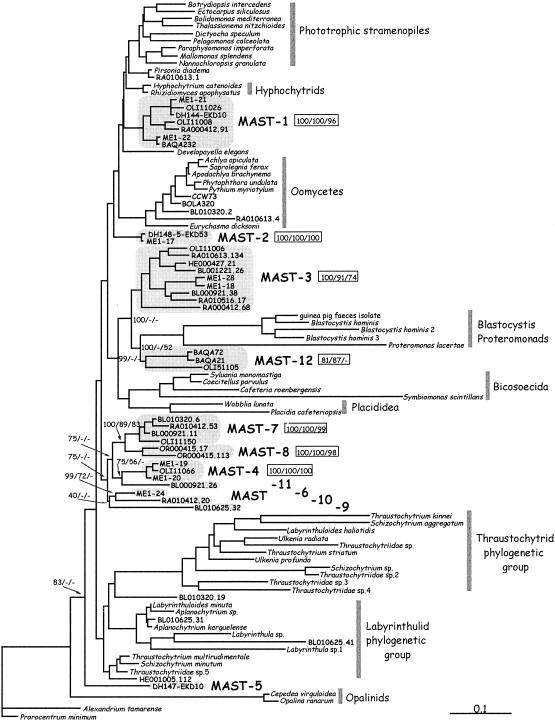FIG. 1.
Maximum-likelihood phylogenetic tree constructed with complete 18S rDNA sequences of stramenopiles and of two dinoflagellates as an outgroup. Novel marine stramenopile clusters (MAST-1 to MAST-12) are boxed and appear among known heterotrophic basal groups. The scale bar indicates 0.1 substitution per position. Bayesian posterior probabilities (mean of four separate analyses) and neighbor-joining and maximum-parsimony bootstrap values are shown (in that order) to the right of MAST clusters (boxed) and to the left of some other relevant nodes.

